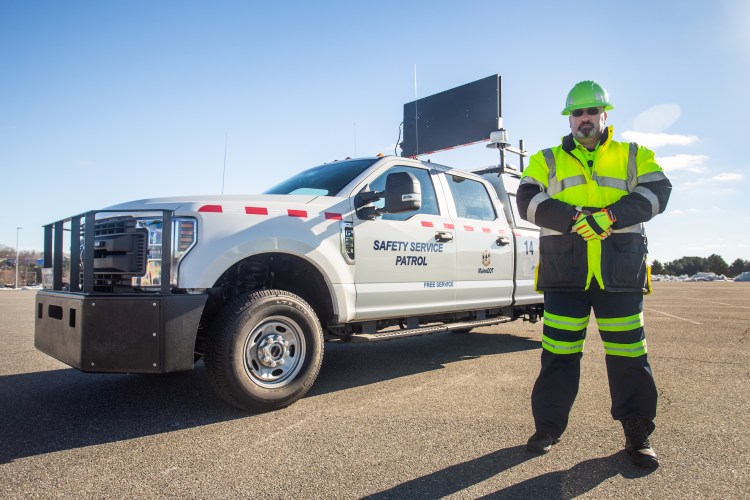
MaineDOT recently released a Traffic Mobility Report offering cost-effective solutions to the growing issue of congestion along our highways. In decades past, the solution to congestion was to widen or build new highways. But building new capacity is costly, complex and takes several years of development.
However, today’s traffic and incident management technologies offer hope for timely, significant and lasting mobility improvements for Maine’s transportation customers. Nationally and internationally, trends point to utilizing technology and data to support operational improvements that address safety, efficiency and mobility.

MDOT photo by Adam Grotton
Traffic signals have become increasingly complex. Most motorists don’t give a thought to the inner workings of the traffic light on the corner. Thanks to new technology, signals are now an important component of any infrastructure network, with the potential to improve mobility, reduce congestion, and save time, money and fuel for motorists.
Because of the more sophisticated technologies, signals are becoming costlier and more complex to maintain at adequate working levels. The report team estimates that roughly 369 traffic signals across Maine require top-to-bottom replacement.
MaineDOT has already started to incorporate these replacement projects in its three-year Work Plan for 2019-2020-2021.
The department recently received a Better Utilizing Investments to Leverage Development (BUILD) grant worth more than $8.2 million, which will cover a large portion of the $16.4 million project costs. The grant, to improve traffic mobility, will go towards improvements to or replacements of 101 traffic signals in 13 communities.
Intelligent Transportation Systems (ITS) can keep Maine moving

MDOT photo by Adam Grotton
Intelligent transportation systems are useful for alleviating the effects of congestion, traffic incidents, and road/weather conditions. ITS can be used to notify roadway users of these problems and to provide up-to-the-minute recommendations to avoid or minimize delays. This has been viewed as a cost-effective, minimally intrusive, and efficient tool to address transportation problems on high-volume corridors.
In 2017, MaineDOT deployed changeable message signs (CMS) at every interchange on the I-295 corridor. Thanks to the CMS, the department can convey real-time information to motorists in regards to delays, safety issues, and messaging. The department has received recognition for the use of creative safety messaging on the boards.
New service patrol may safely and swiftly restore traffic flow

MDOT photo by Adam Grotton
The Mobility Report also underscored the importance of traffic incident management (TIM). Managing traffic incidents on key corridors increases the safety of travelers and first responders, lessens the chance for secondary crashes, and gets traffic movement back to normal as soon as possible.
One recommendation that was recently implemented is the use of safety service patrols on the I-295 corridor between Topsham and Scarborough. Safety patrols also assist motorists by changing flat tires, towing vehicles to a safe area, providing up to a gallon of fuel, and clearing debris from roadways.
In conclusion, MaineDOT has started to incorporate some Traffic Mobility Report recommendations in our next three-year work plan. Now is the time to make strategic investments and assume certain responsibilities to ensure a safe, reliable, and efficient transportation system, today and in the future.
For more information, please visit Maine.gov.
Copy the Story LinkSend questions/comments to the editors.



Success. Please wait for the page to reload. If the page does not reload within 5 seconds, please refresh the page.
Enter your email and password to access comments.
Hi, to comment on stories you must . This profile is in addition to your subscription and website login.
Already have a commenting profile? .
Invalid username/password.
Please check your email to confirm and complete your registration.
Only subscribers are eligible to post comments. Please subscribe or login first for digital access. Here’s why.
Use the form below to reset your password. When you've submitted your account email, we will send an email with a reset code.